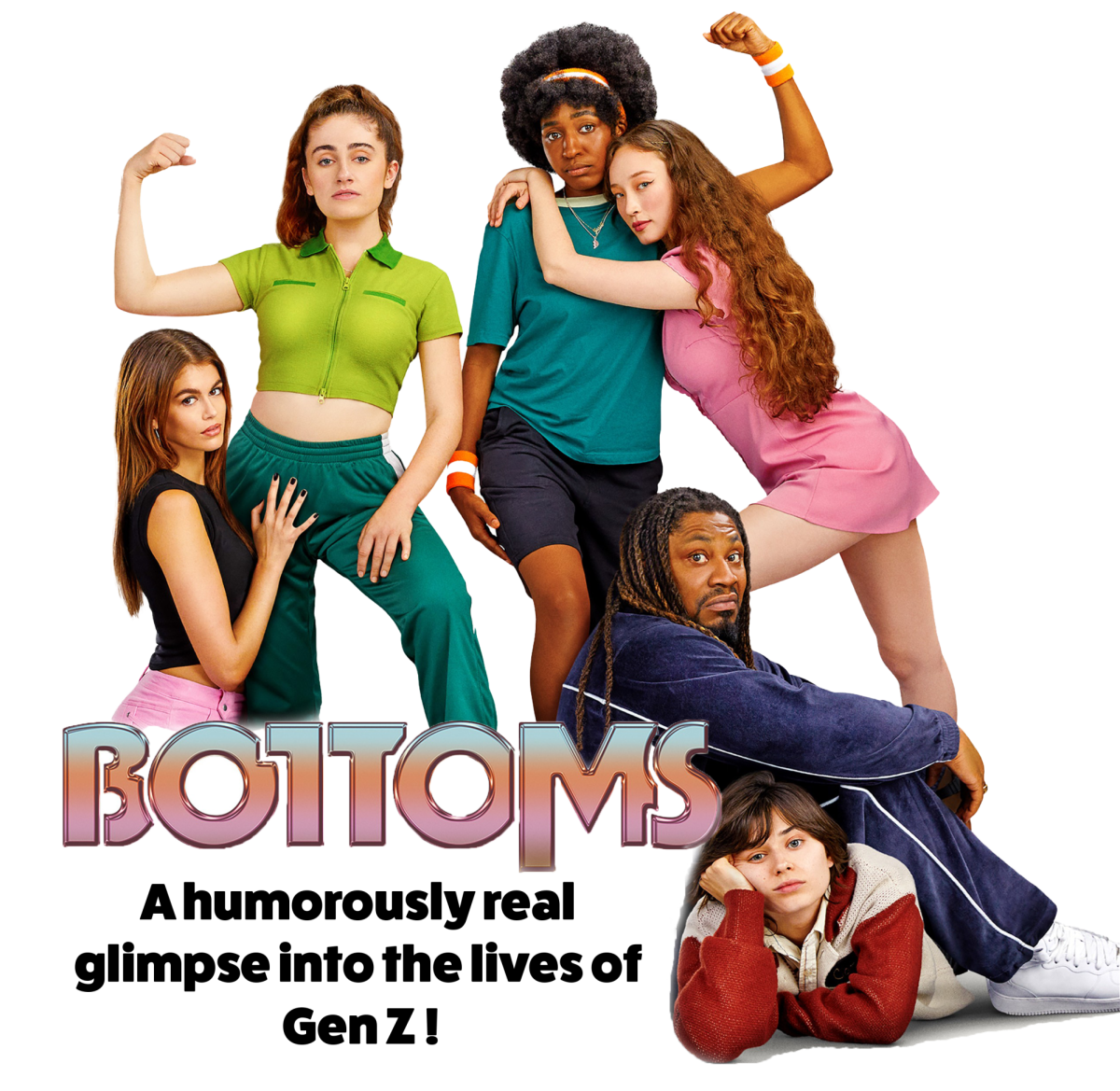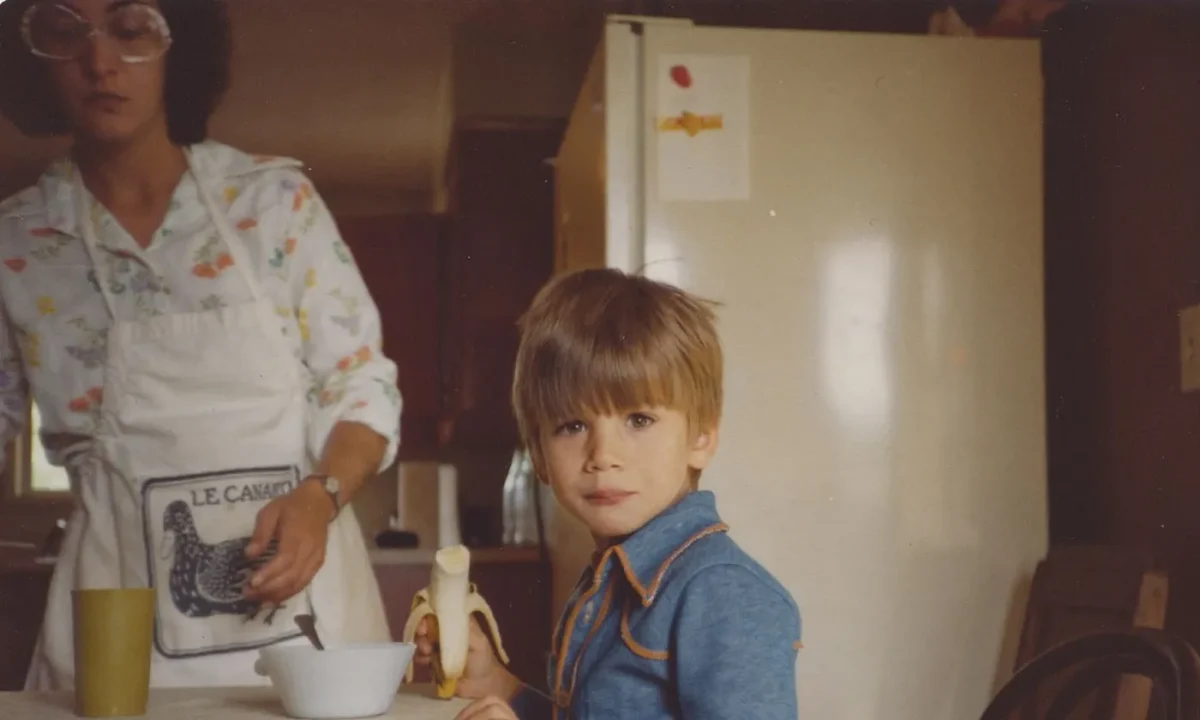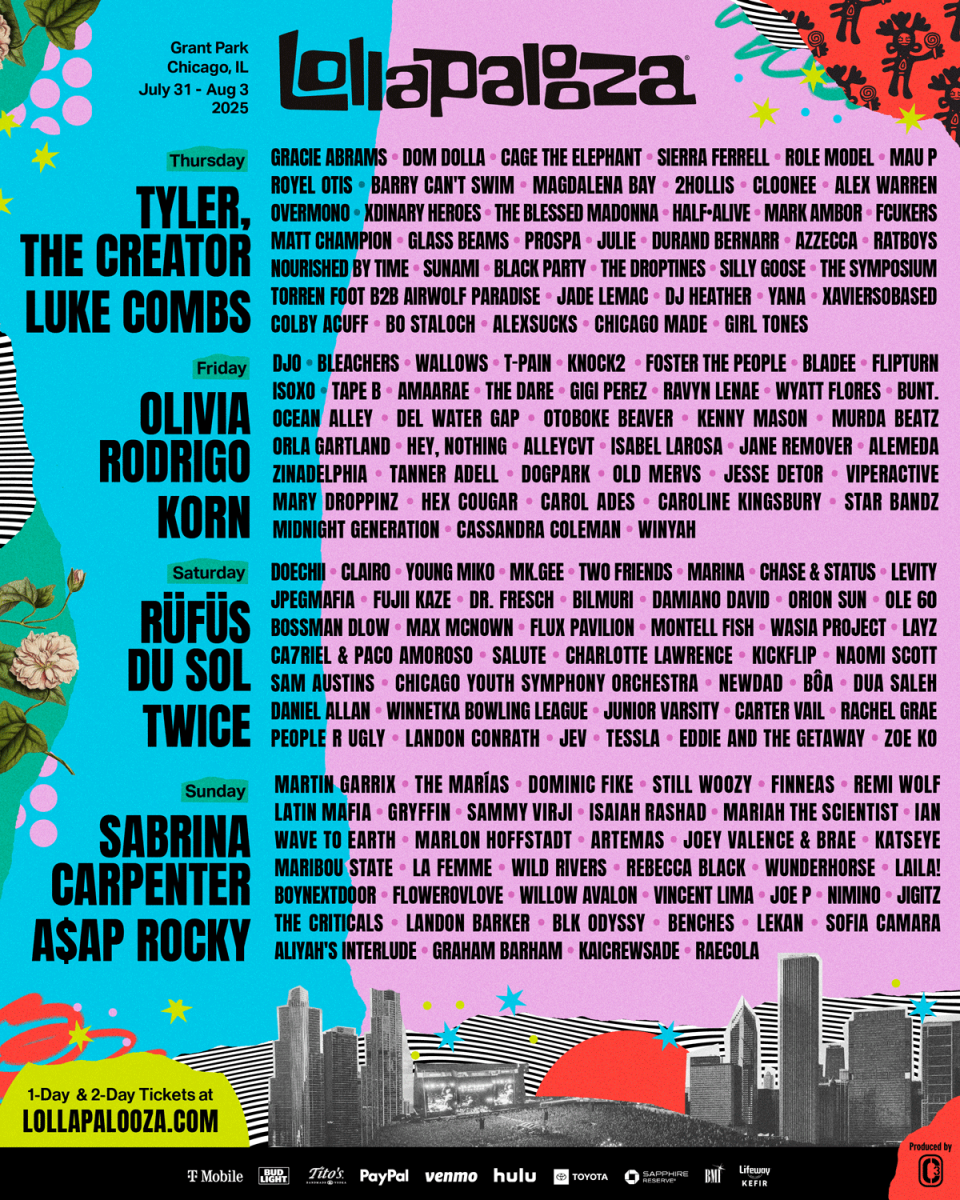A new movie joined the genre of raunchy teen comedies. “Bottoms” is written by Emma Seligman and Rachel Sennott, both of whom worked on “Shiva Baby,” and is described by Seligman, one of the directors, as “Wet Hot American Summer” but with a Generation Z and queer audience in mind. This could not be more on the nose.
“Bottoms” follows lesbian best friends, PJ (Rachel Sennott) and Josie (Ayo Edebiri), who start a fight club, or self-defense club, in the name of female empowerment at their school, although in reality, they want to lose their virginities to the girls they have crushes on. What ensues is a riotous combination of satire, drama and cliches about what it is like to have a crush in high school, and what lengths one is willing to go to in order to make them fall in love back.
Like all great high school movies, “Bottoms” plays homage to the teen movies that came before. The movie poster, which features every character against a white backdrop, attributes iconic imagery from “The Breakfast Club” and “Empire Records.” Classic tropes such as a general lack of teacher supervision, the mentor teacher going through personal marital problems, and the slow motion pubescent fight scenes all contribute to the movie’s nod to the many movies that shaped Gen Z’s childhoods and add to the film’s charm. Subtle references to films like “Mean Girls” and “Easy A” set up the viewer for an insightful and nostalgic film experience. A particularly funny tribute occurs at the beginning of the film, when the students file into the classroom, only to hear the bell ring a few minutes later, leaving just enough time for the stereotypical bully, Jeff, to remark rudely at PJ and Josie, but not enough time for the teacher to actually teach. When the bell rings, PJ hilariously quips, “Oh, that’s class?”
The film turns its head on many cinematic high school tropes. A major cliche that “Bottoms” leaves behind is the unpopular girl and her unrequited love for the lead football player. PJ and Josie are not starting a fight club to attract the quarterback, they are starting the club to attract the attention of cheerleaders! In another heteronormative twist, Josie saves Jeff, the quarterback, and Jeff, playing the damsel in distress, becomes attracted to her only after she commits a chivalrous act.
In a way, this movie is barely about men. Except for the purpose of executing a joke, the film skillfully leaves men out of the picture and instead plays with heteronormative narratives and cliches. With the exception of Mr. G who supports his female students and sponsors the fight club, in the few scenes featuring men, they attempt to tear down the girls. As when the football players delve into PJ and Josie’s backstories to disprove that they went to juvie and disassemble the fight club, unable to fathom the spotlight being on anyone else other than them. Ultimately, their attempts are unsuccessful, as the final scene culminates with the club storming the field, (though they only usurp the spotlight to protect Jeff from being hazed by the other team). Ironically, even when trying to assume a dominant space over men, women are still catering to men’s needs and concerns.
Unlike some Gen Z teen movies, such as “Love, Simon,” where the main character is grappling with their sexuality, this movie takes place after PJ and Josie come out. Rather than their sexuality being used to highlight the pressure to fit in during high school, their queerness is the underlying motivation for the fight club and the normal teenage desire to lose their virginity. In short, their queerness does not matter, and fulfilling their goal does. Even with quiet mentions of feminist and queer theory throughout the film, such as an iconic name drop of bell hooks, PJ and Josie’s sexuality remains only a small aspect of the film. Due to this, other themes besides sexuality take precedence, rather than risking the film being narrowly categorized as a queer teen flick alone. What is at the heart of “Bottoms” is a humorously real glimpse into the lives of Gen Z.
Some new comedies try too hard to relate to Gen Z and end up portraying Gen Z in a “cringe” way, but “Bottoms” authentically relates to many of the themes and conversations that surround Gen Z and their high school environment. Under classic teenage moments, such as sharing circles where girls divulge their innermost trauma and wild jumps to a conclusion, such as when Josie predicts that not losing her virginity means she will be a closeted lesbian with a gay pastor husband, “Bottoms” explores the jokes about violence, mental health and sexuality that seem to define this generation’s humor. Rather than brushing around these topics, “Bottoms” looks them in the face and satirically jokes about eating disorders, gun control, school shooters, conversations on feminism and sexuality in the 21st century and the other significant and heavy issues Gen Z thinks, talks and feels about without undermining their significance and relevance.
Beneath an iconic soundtrack of Avril Lavigne, Charli XCX and more, “Bottoms” authentically and satirically depicts Gen Z and their high school crushes, cliches and conflicts without straining too thin.









